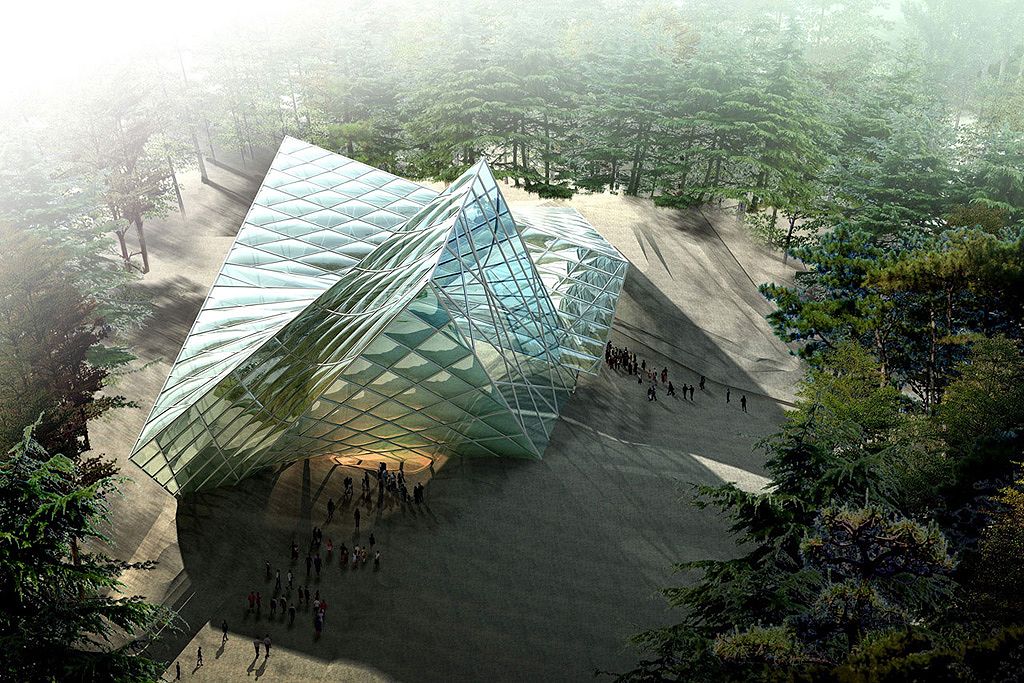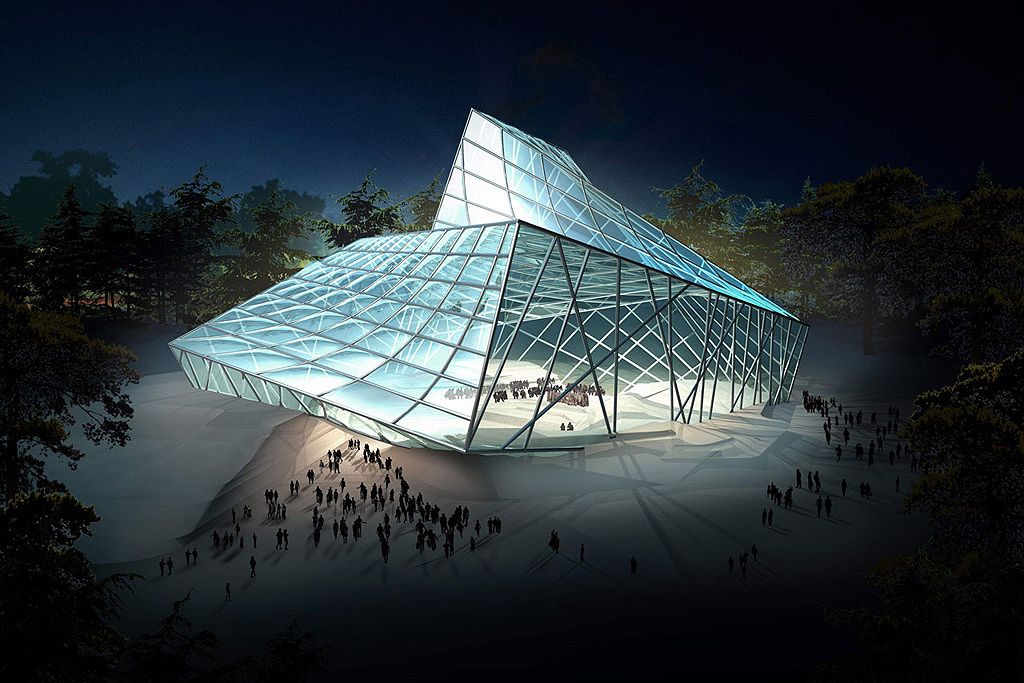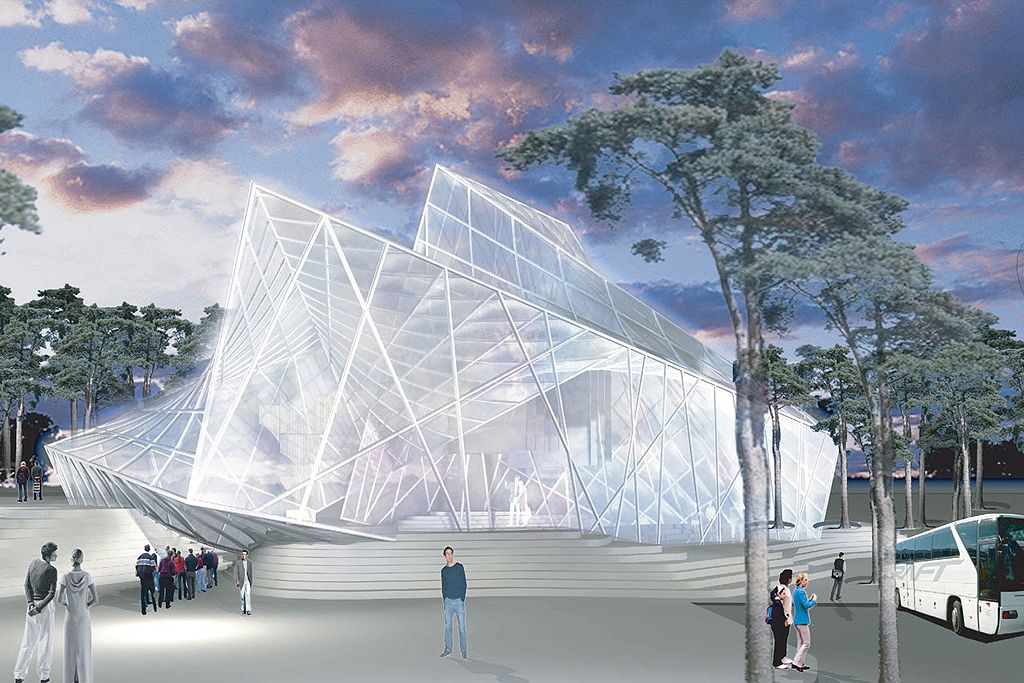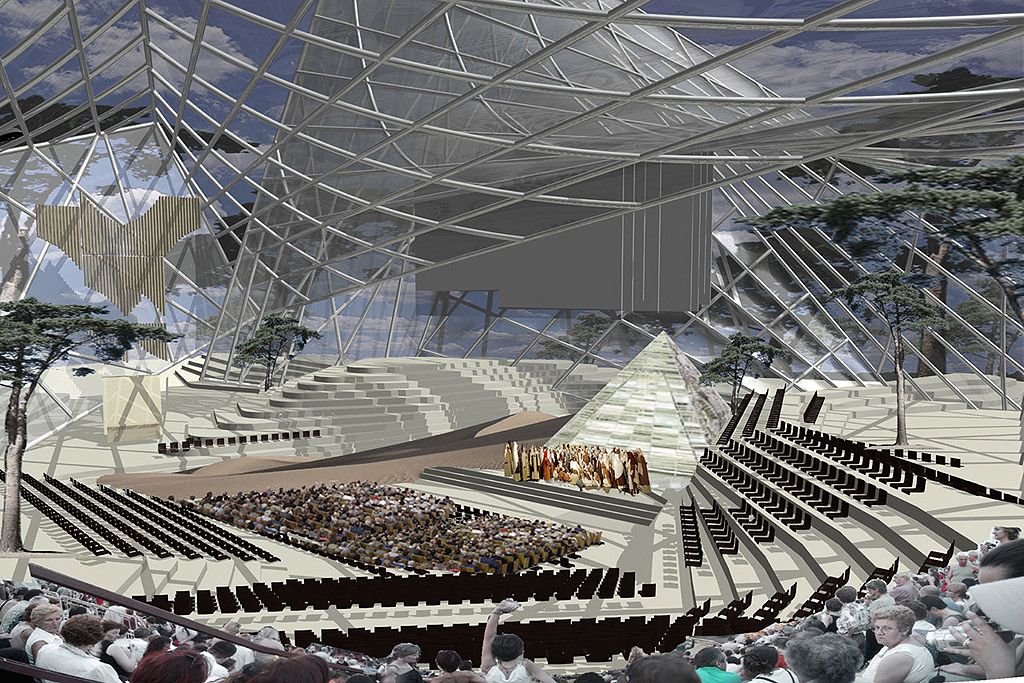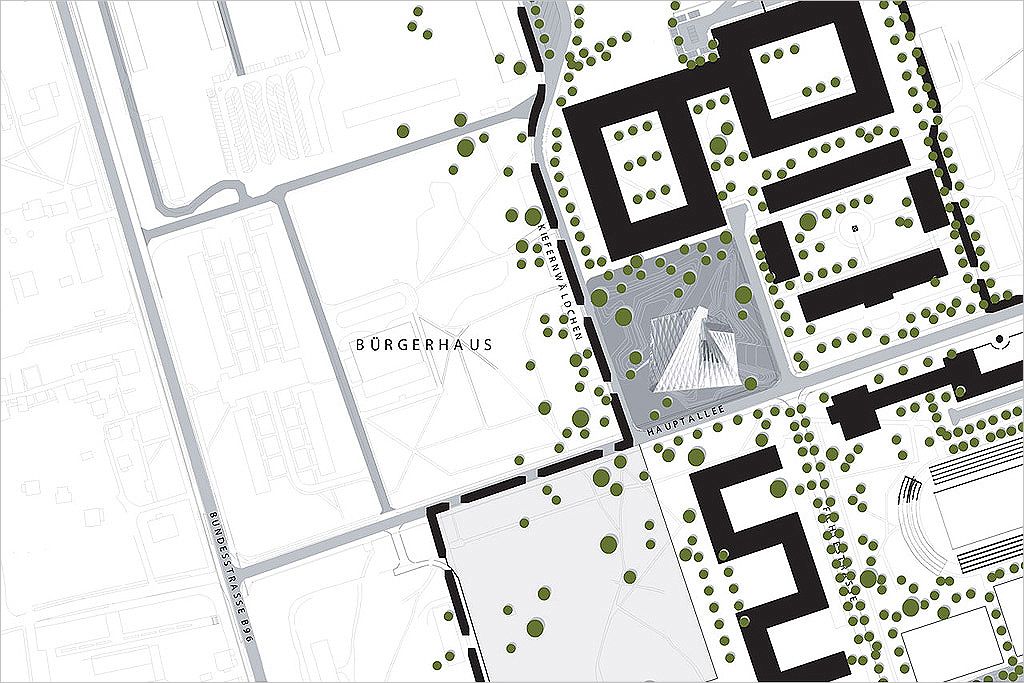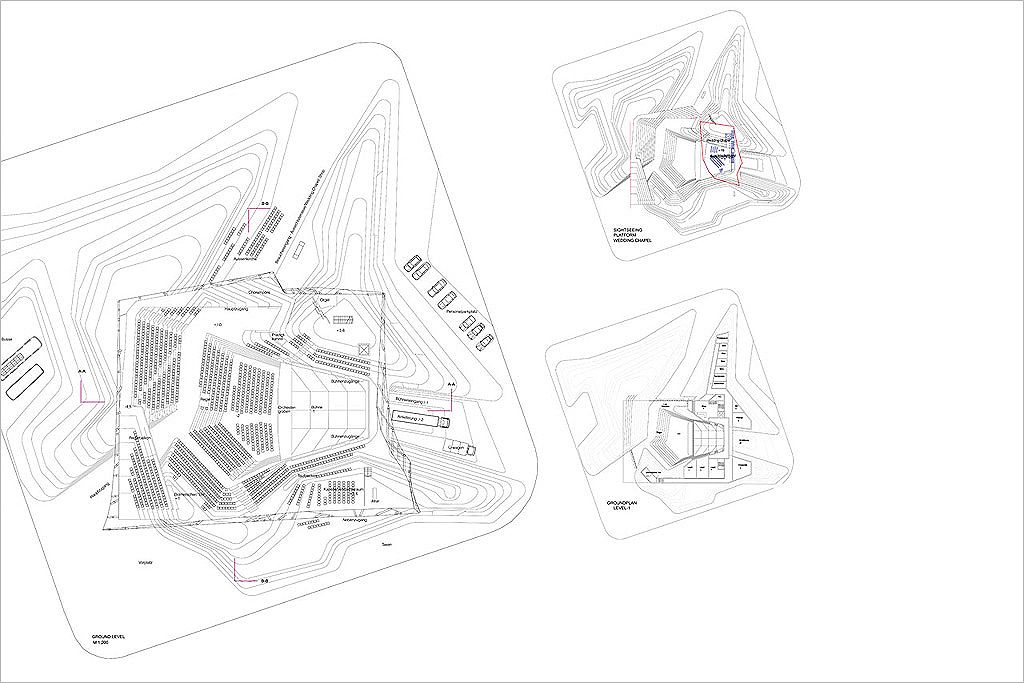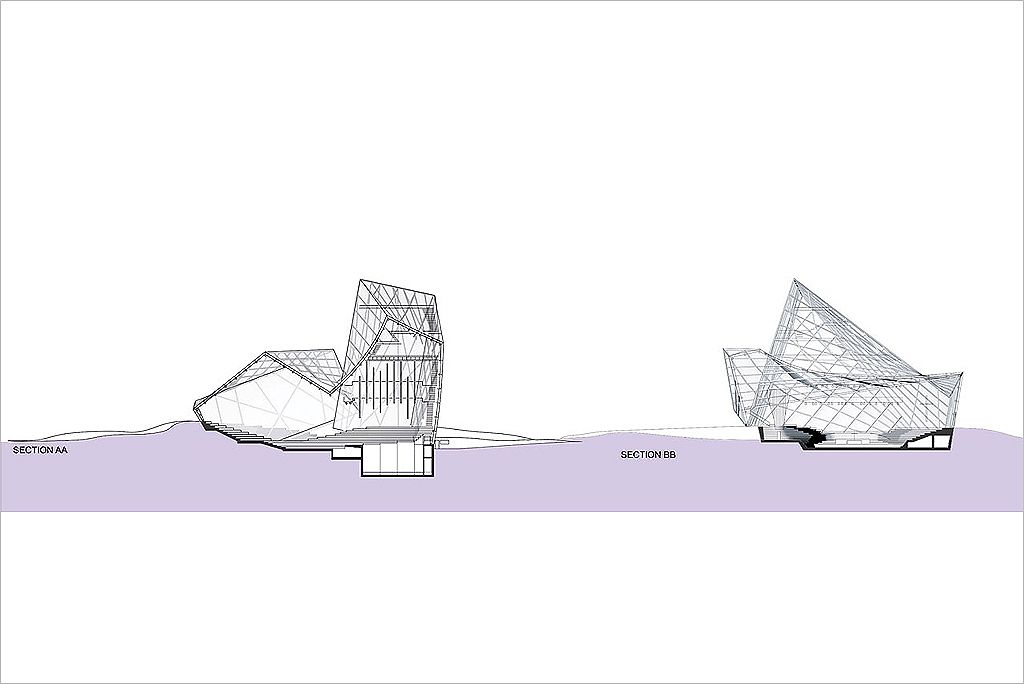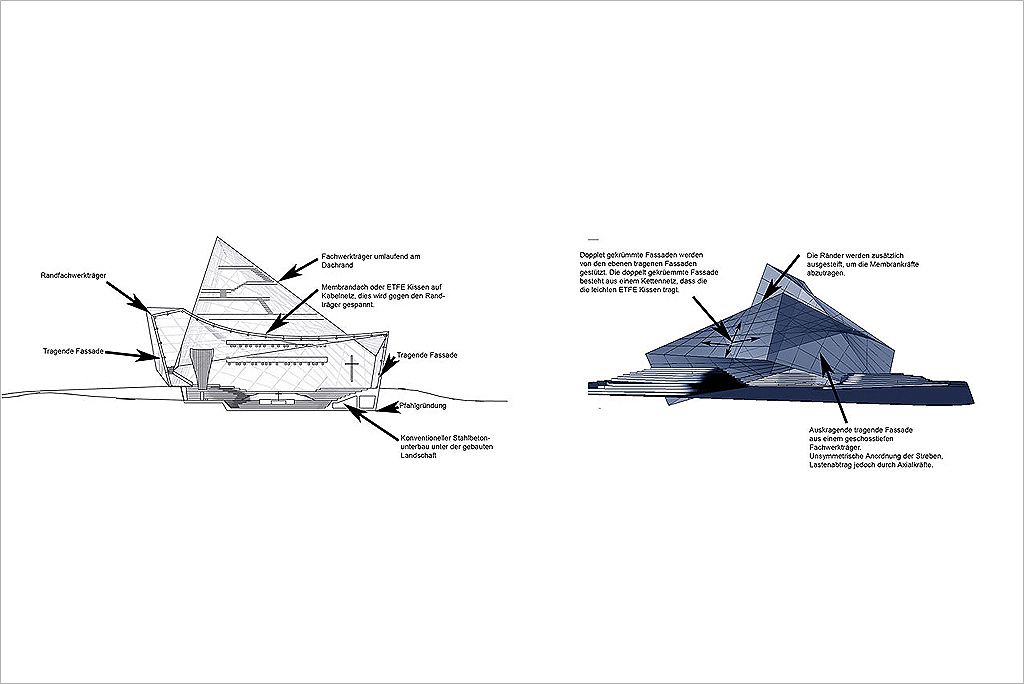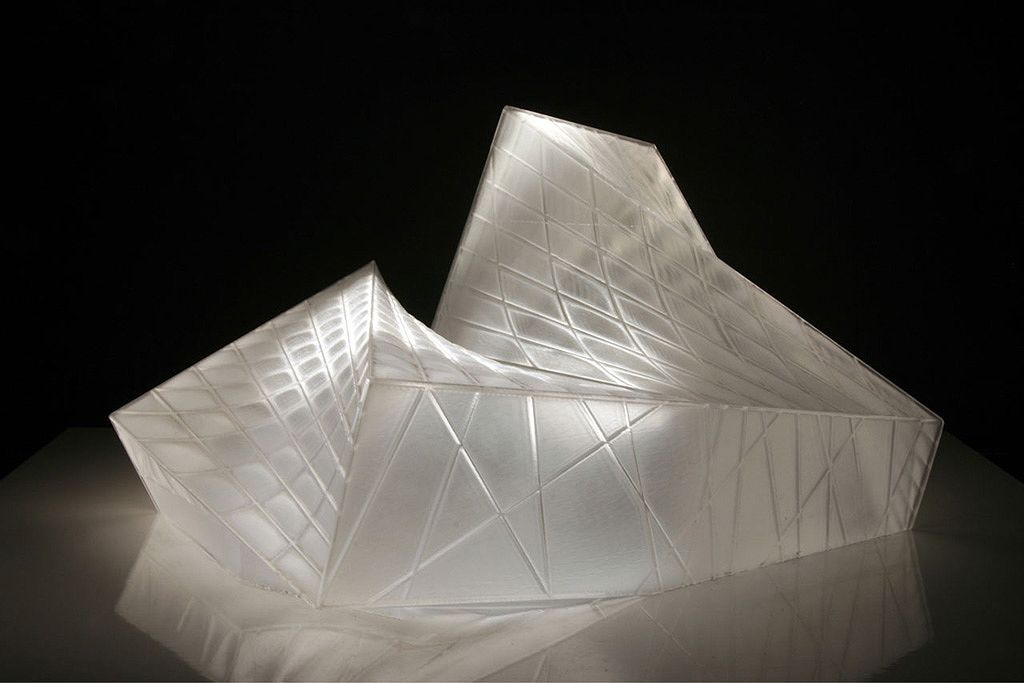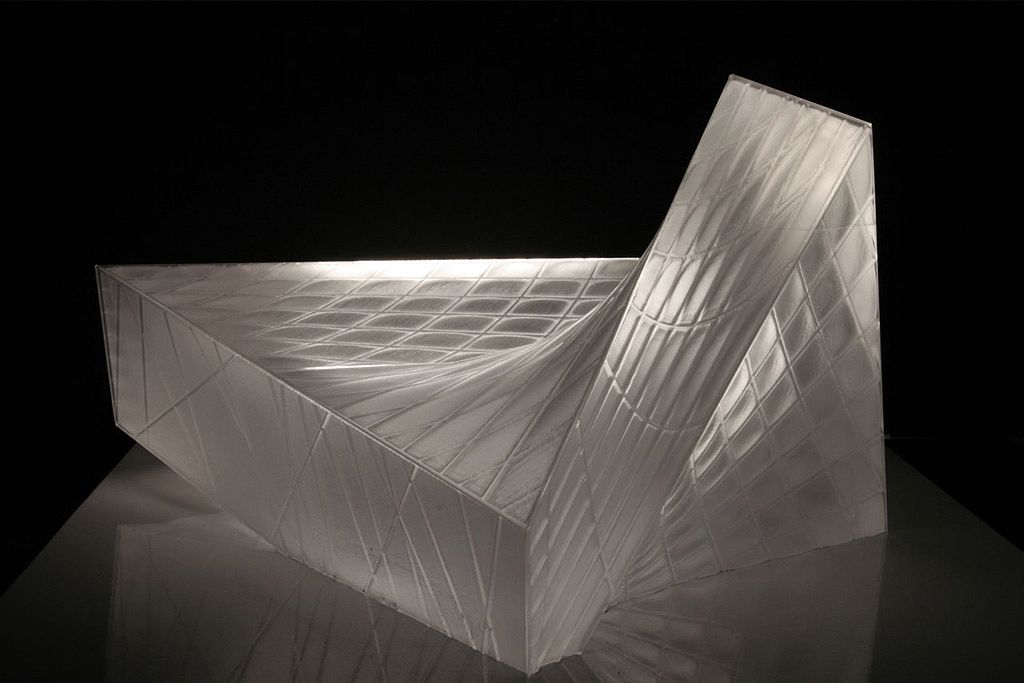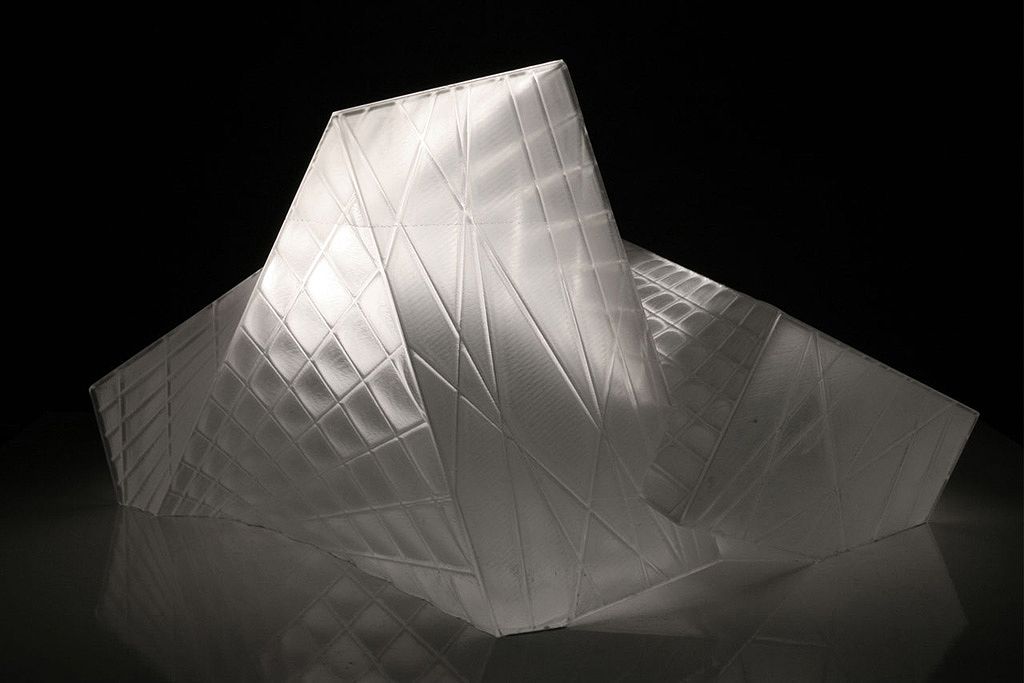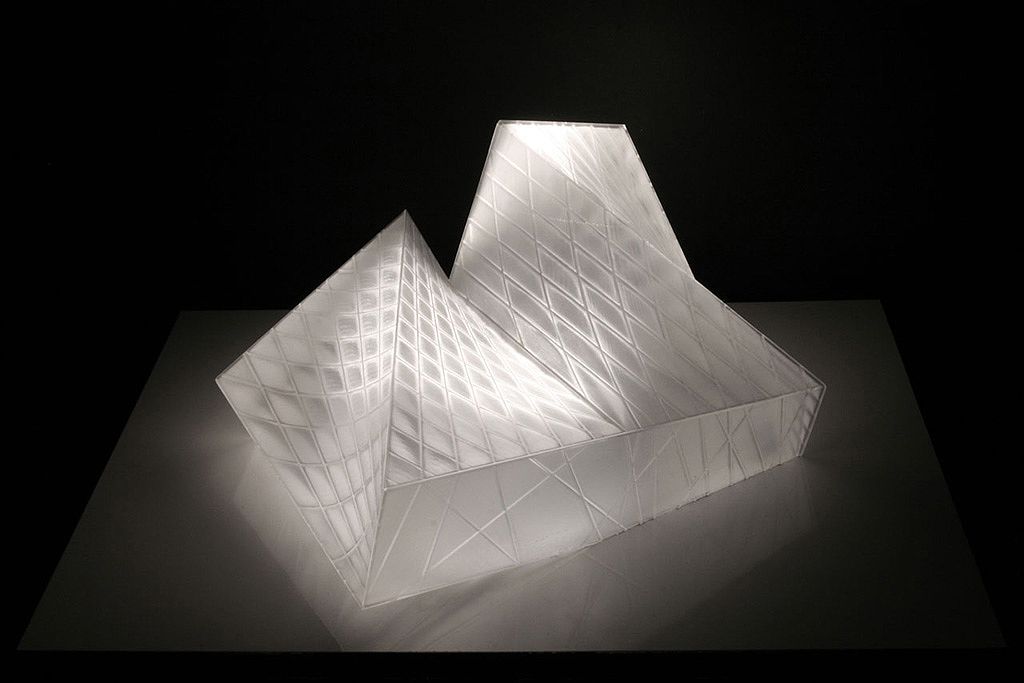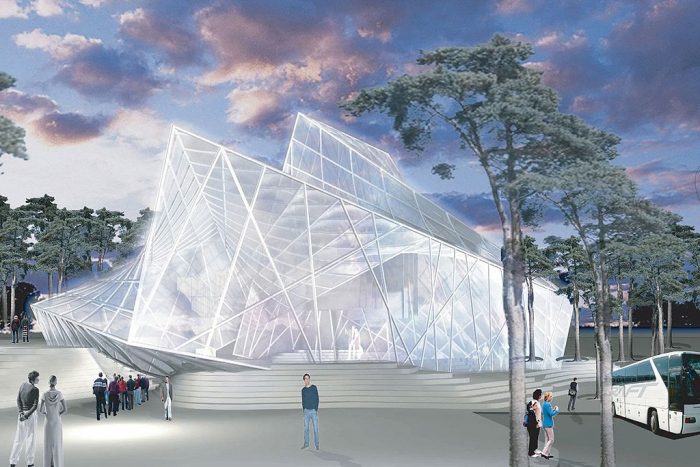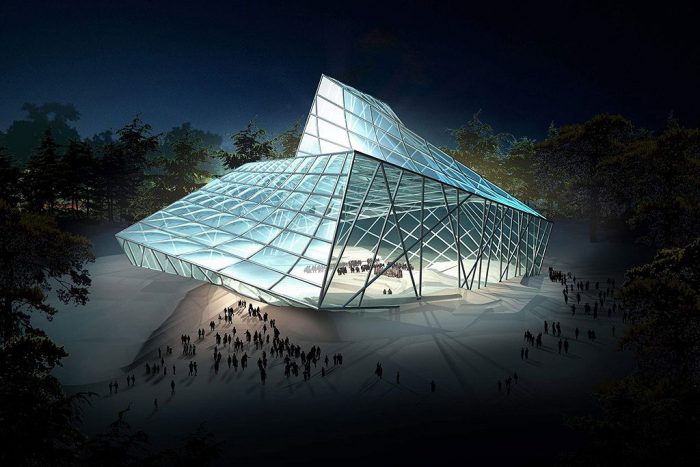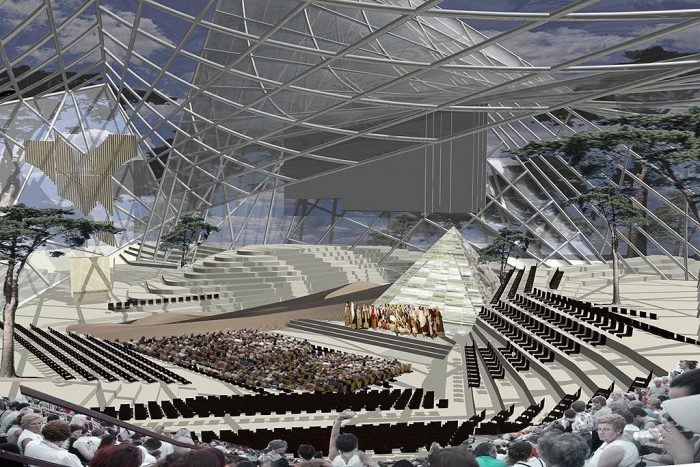Los Angeles based firm, Graft, won a competition for designing a new church located in a previously contaminated, Russian-occupied, area of former East Germany. The proposal meant to represent different religious and ‘scene-o-graphic’ typologies aspects. More details from the architect come after the jump.
Until the fall of the Iron Curtain, the Russian Army’s headquarters in Germany occupied the vast territory in and around Wuensdorf. Closed to the public for decades, the area was left with contaminated soil but also beautiful landscapes where nature had been left alone to flourish.
In this area today, an enormous new development for health, recreation and sports is underway. The competition called for a spiritual centre: a church for confession that could be used as a multi-functional assembly hall or opera as well. Given the historic background of the location, GRAFT questioned the values of traditional form, known typologies and institutionalized solutions for this particular project. We focused instead on a Church design that would provide a new framework for increasingly complex forms of belief systems and we approached the competition with the conviction of positive change and faith in inclusion over the exclusionary practices of traditional religious establishments.
Our belief was that no clear typology for a church, mosque or theater should dominate the shape of the building, but that it should be present at the same time to create an entirely new typology. In the end, the formal language of the building communicated different religious and ‘scene-o-graphic’ typologies in its shape, without being literal. A diamond-shaped crystal ‘envelope’ was developed from three different geometric prefigures that fuse into one another.\
This crystal envelope protects the visitor, but does not cut him/her off from the surrounding landscape. As a mental space for prayer rather than a real enclosure, the landscape has essential atmospheric importance, as it flows from outside to inside the building. All technological functions for modern theatre have been submerged into this landscape, providing complete flexibility for any kind of performance or service imaginable.
With the sermon on the mountain as a metaphoric starting point, a natural auditorium and stage are created that provide the ‘scene-o-graphic’ background for people coming together in prayer underneath the sky.
